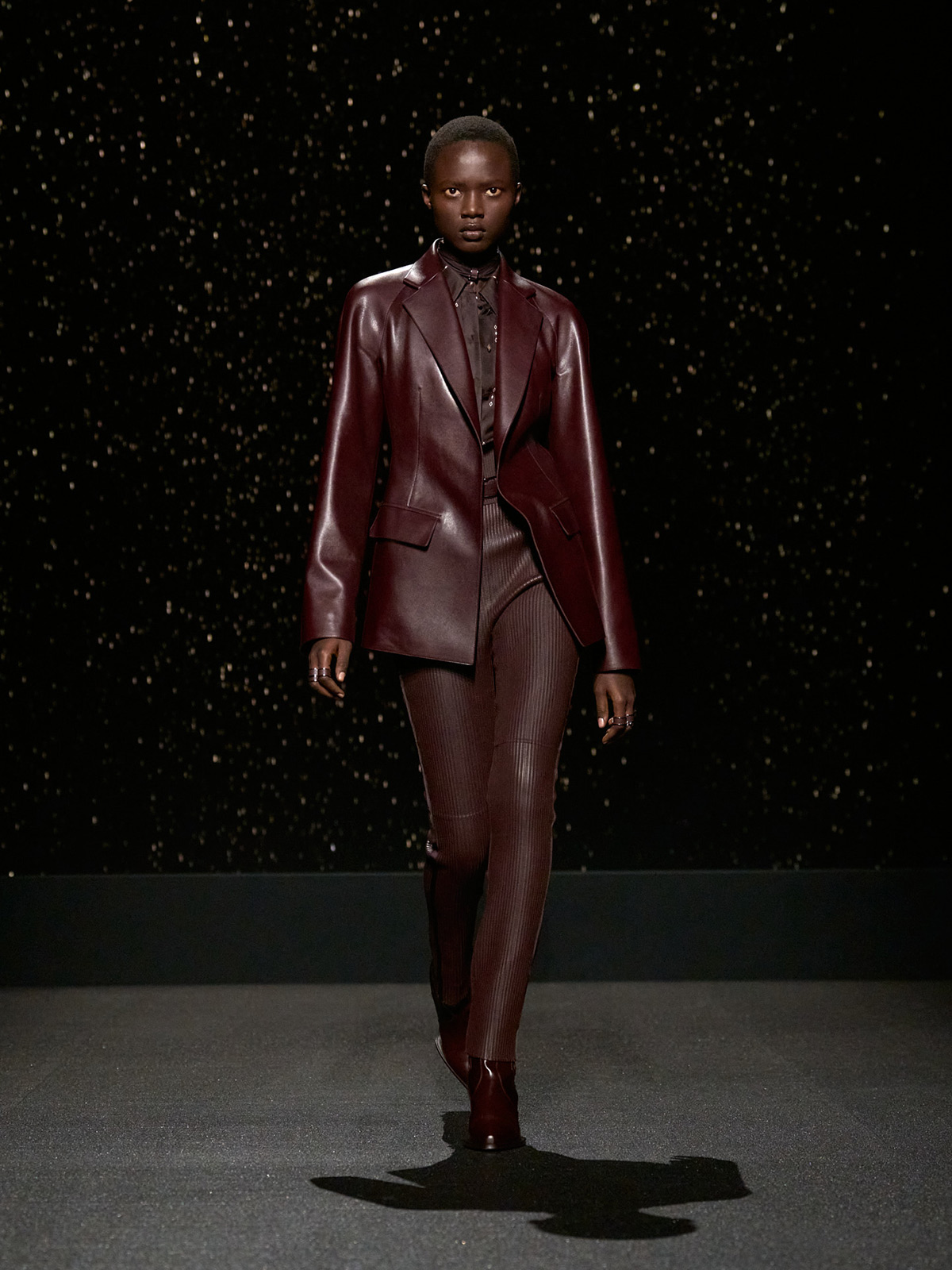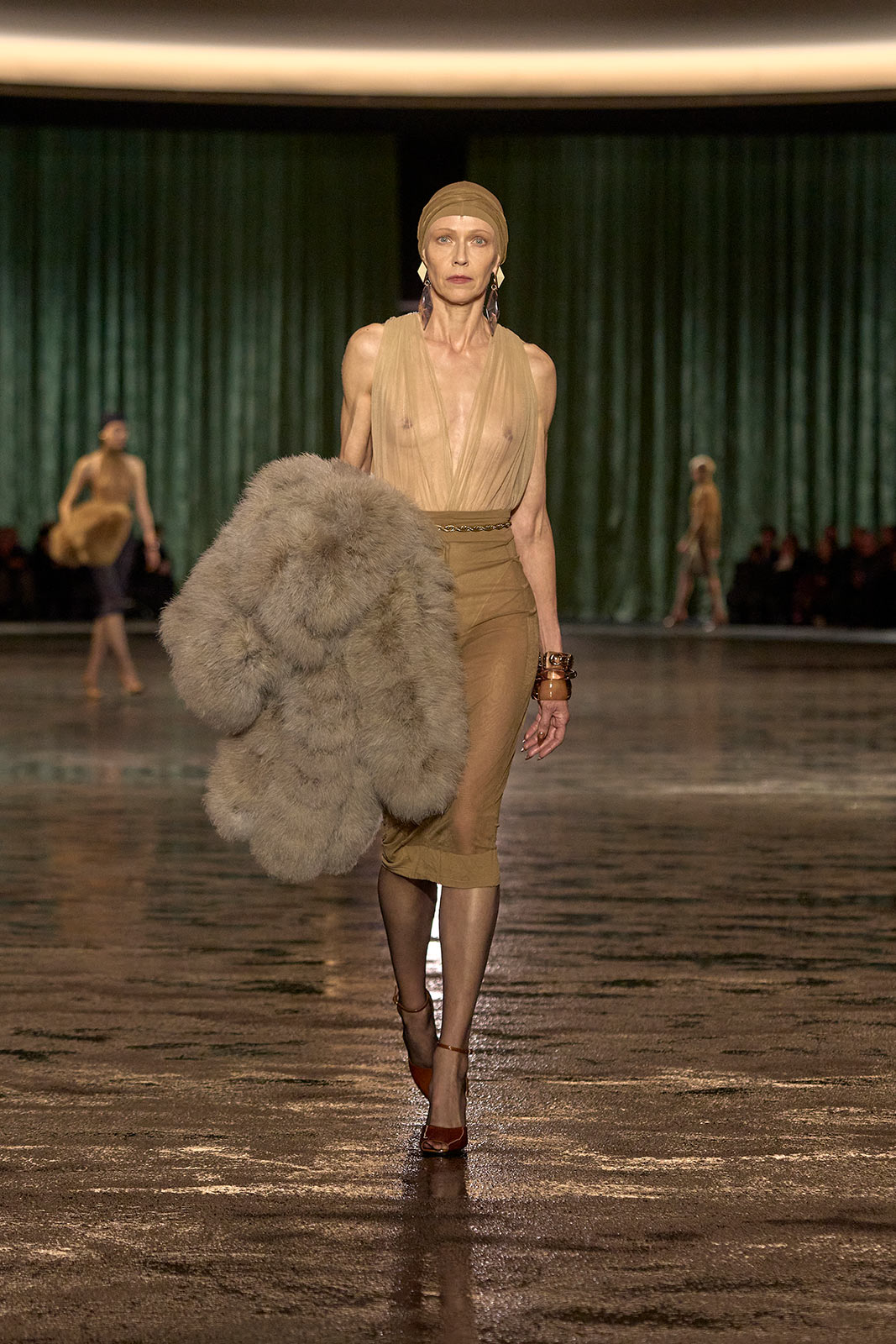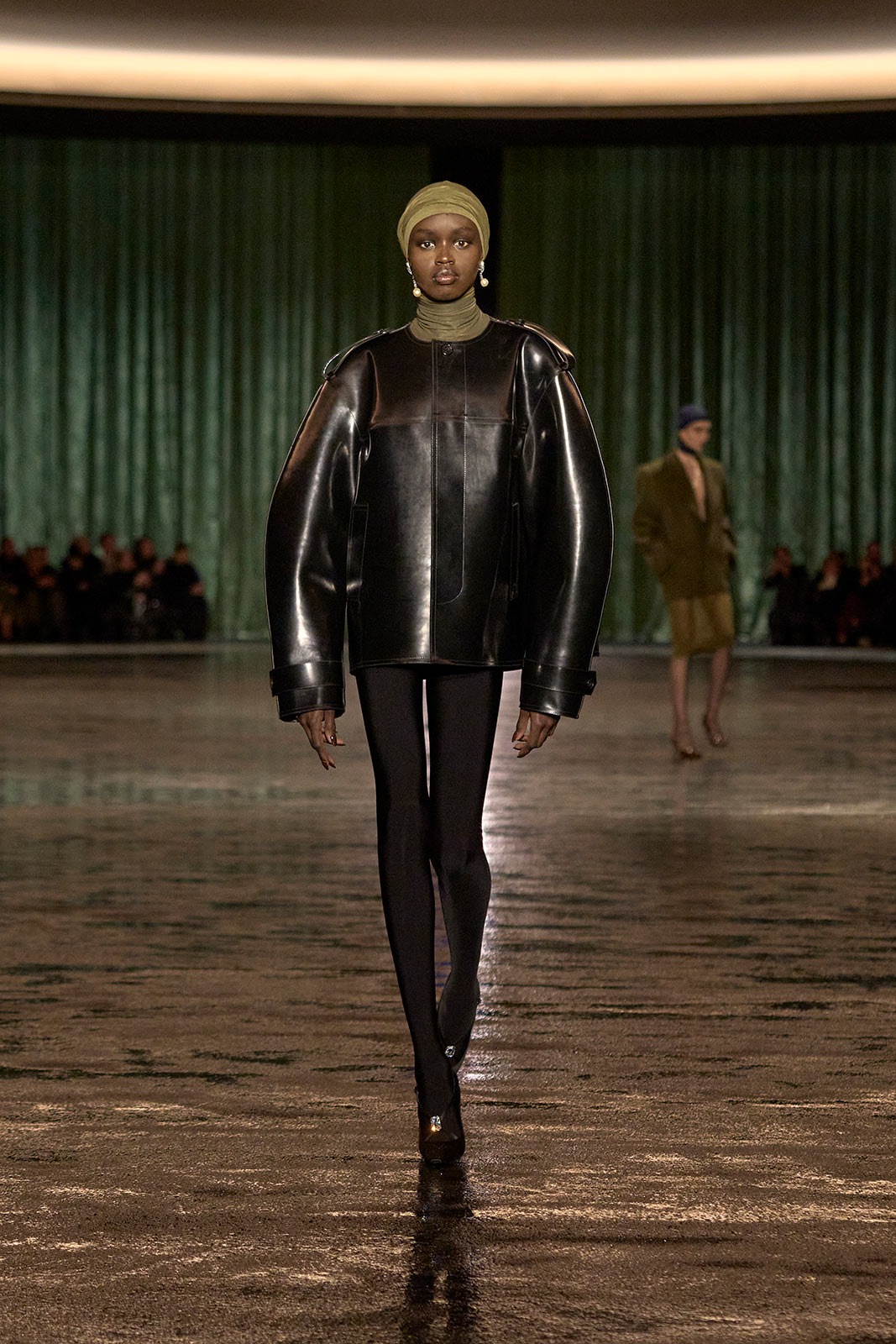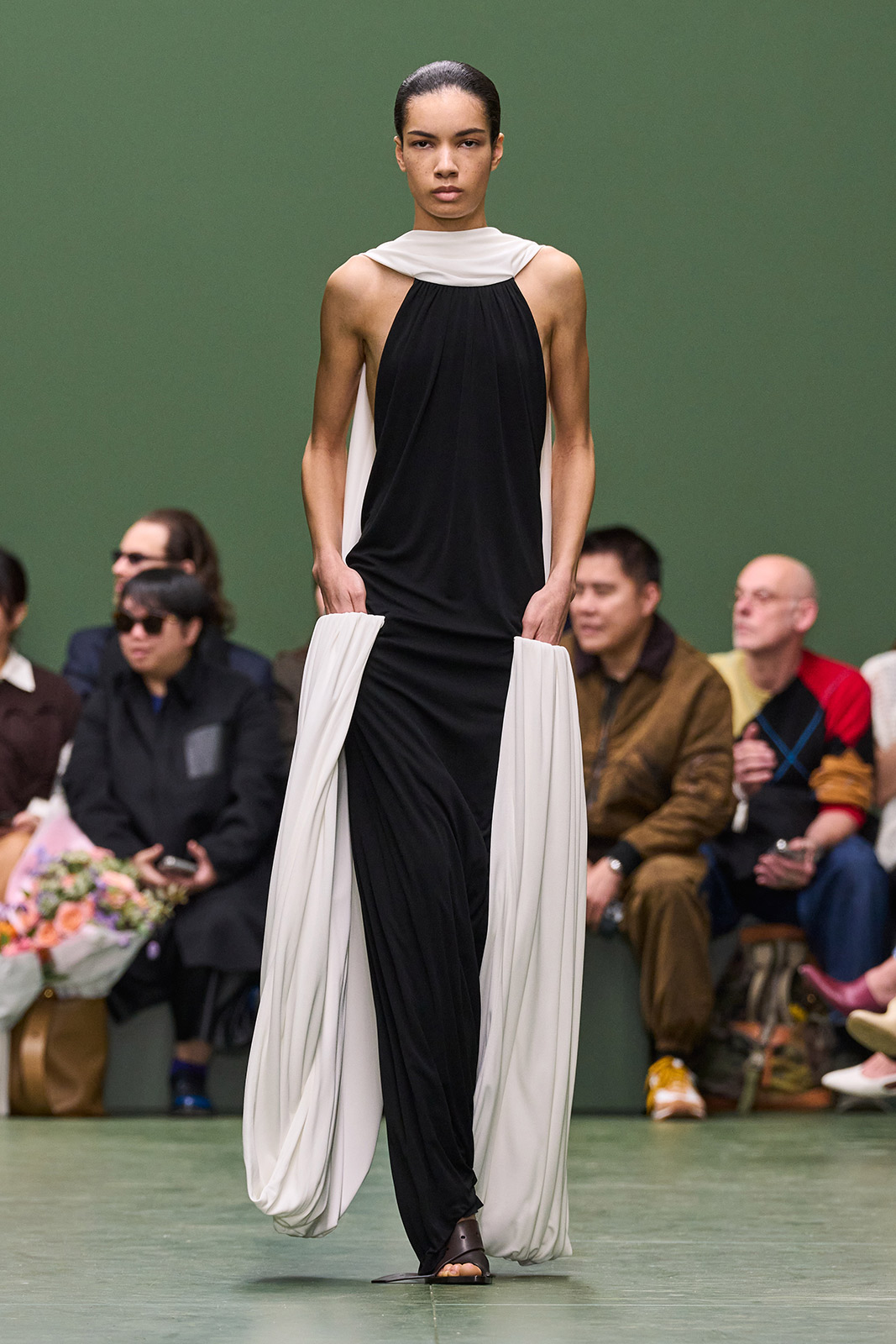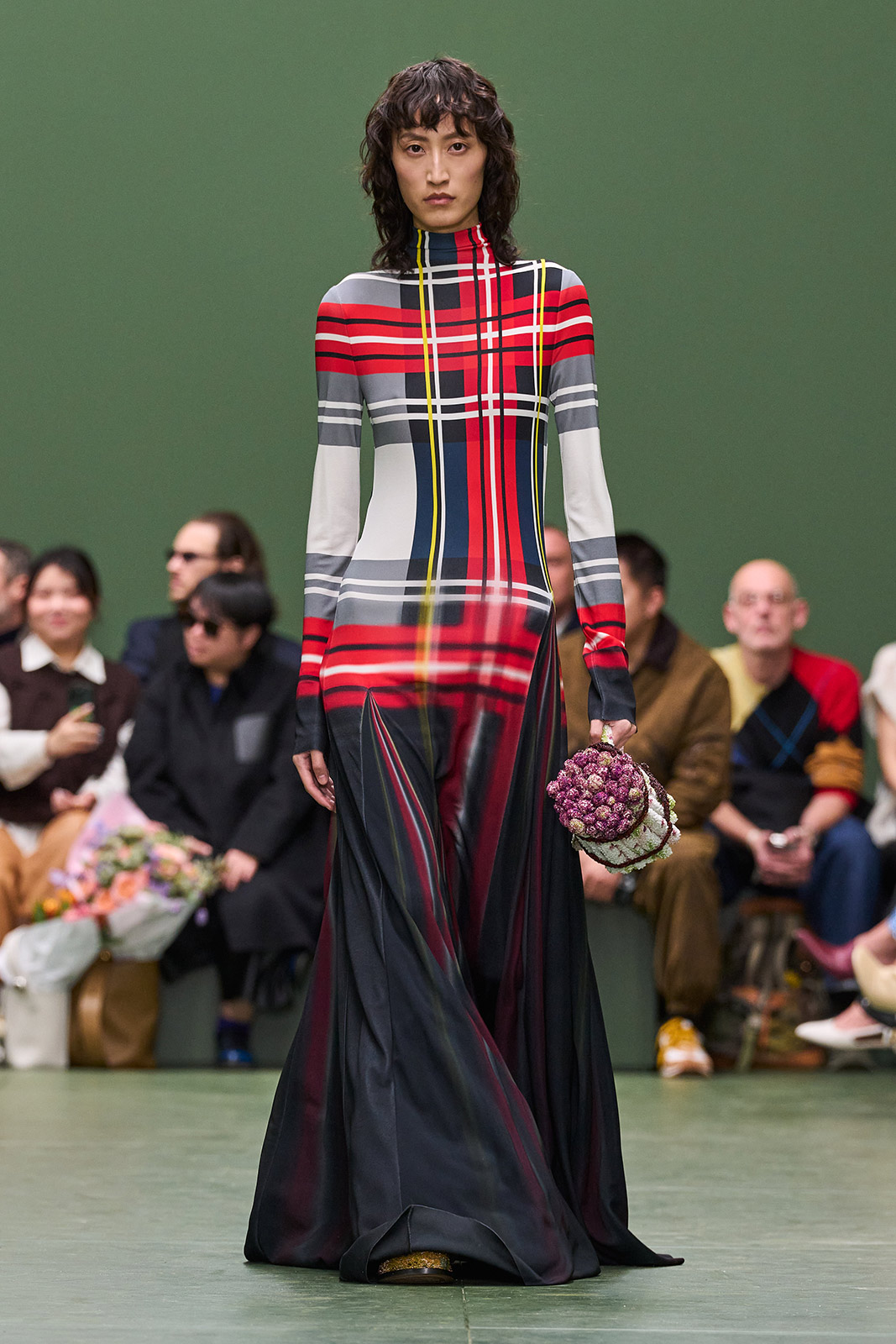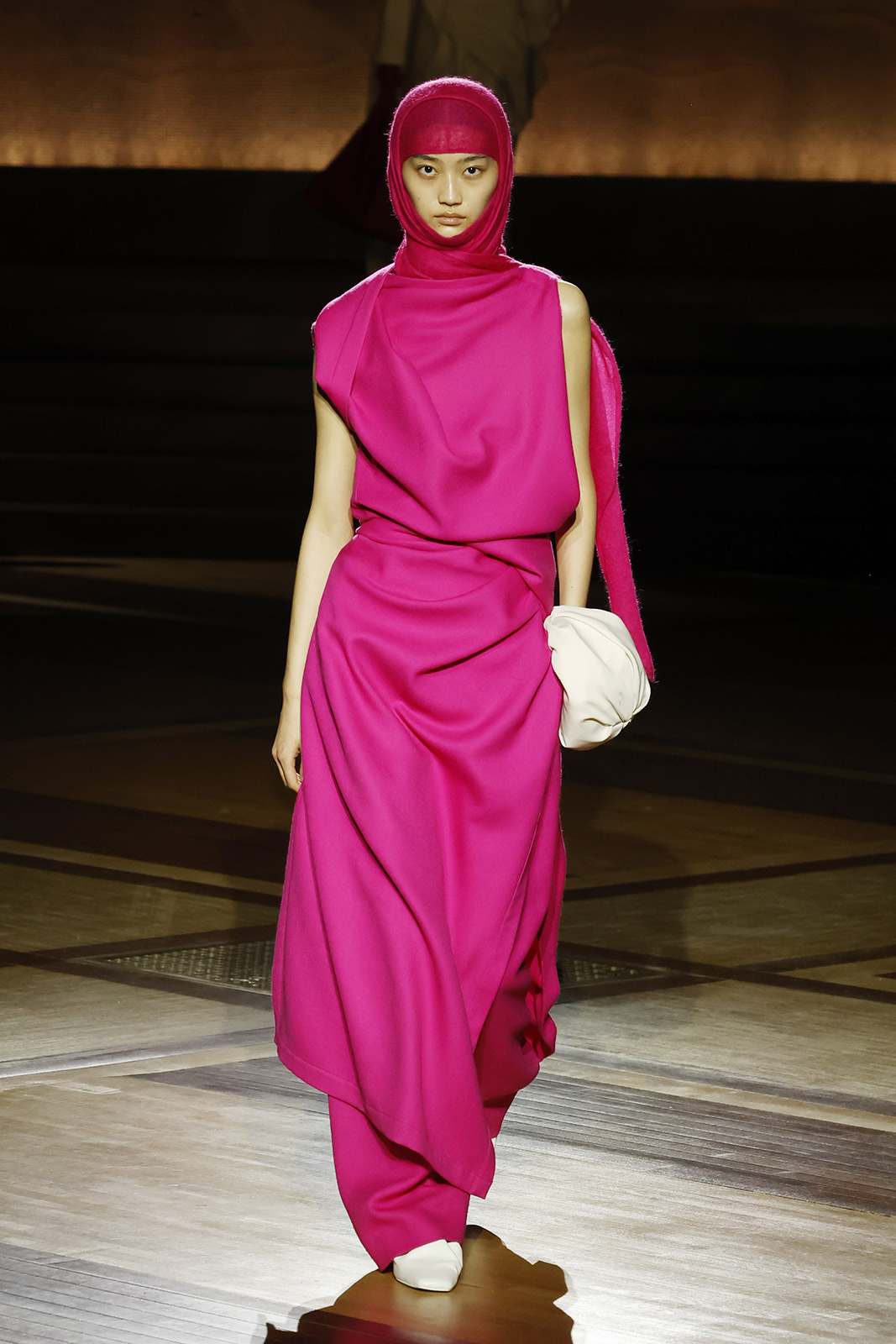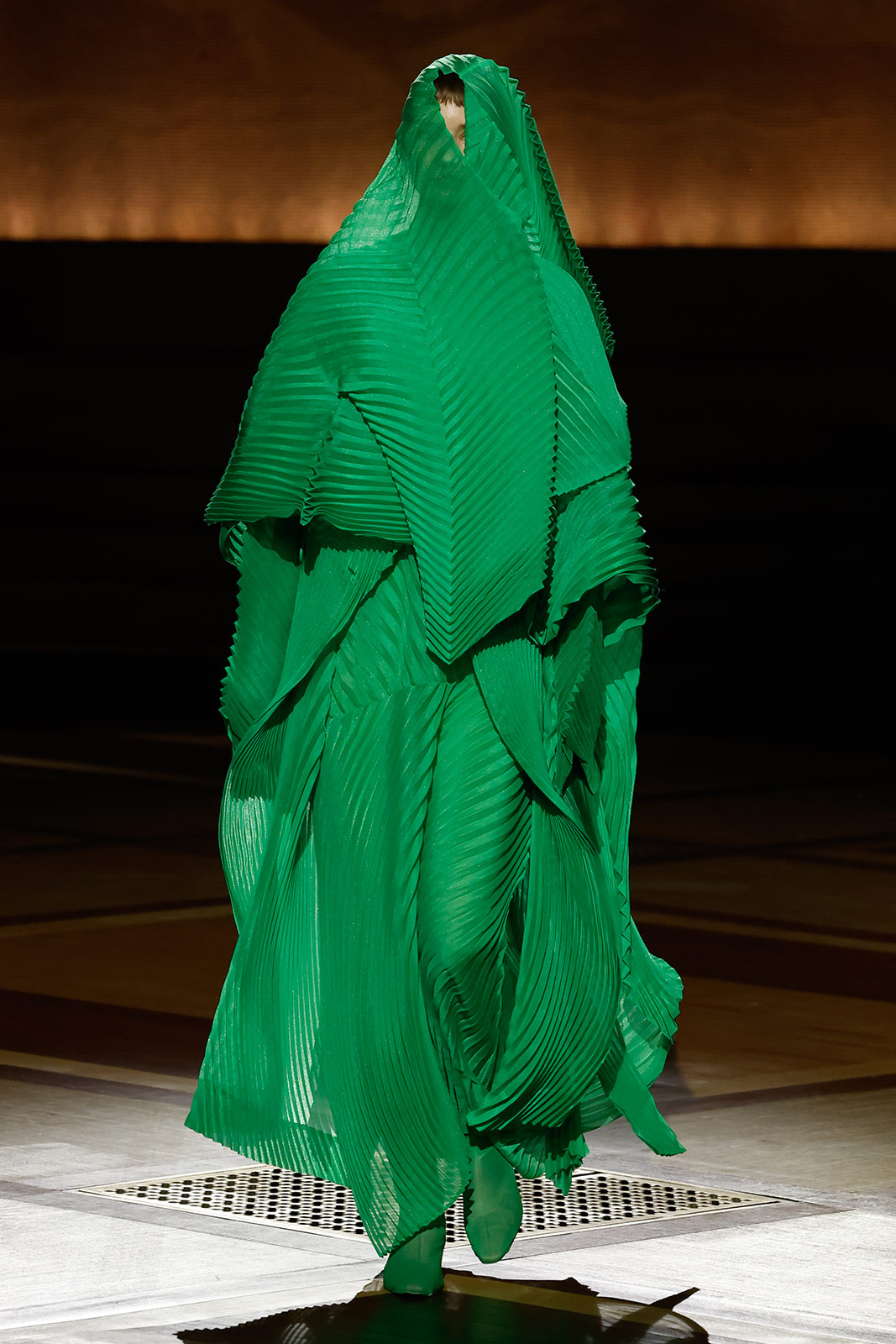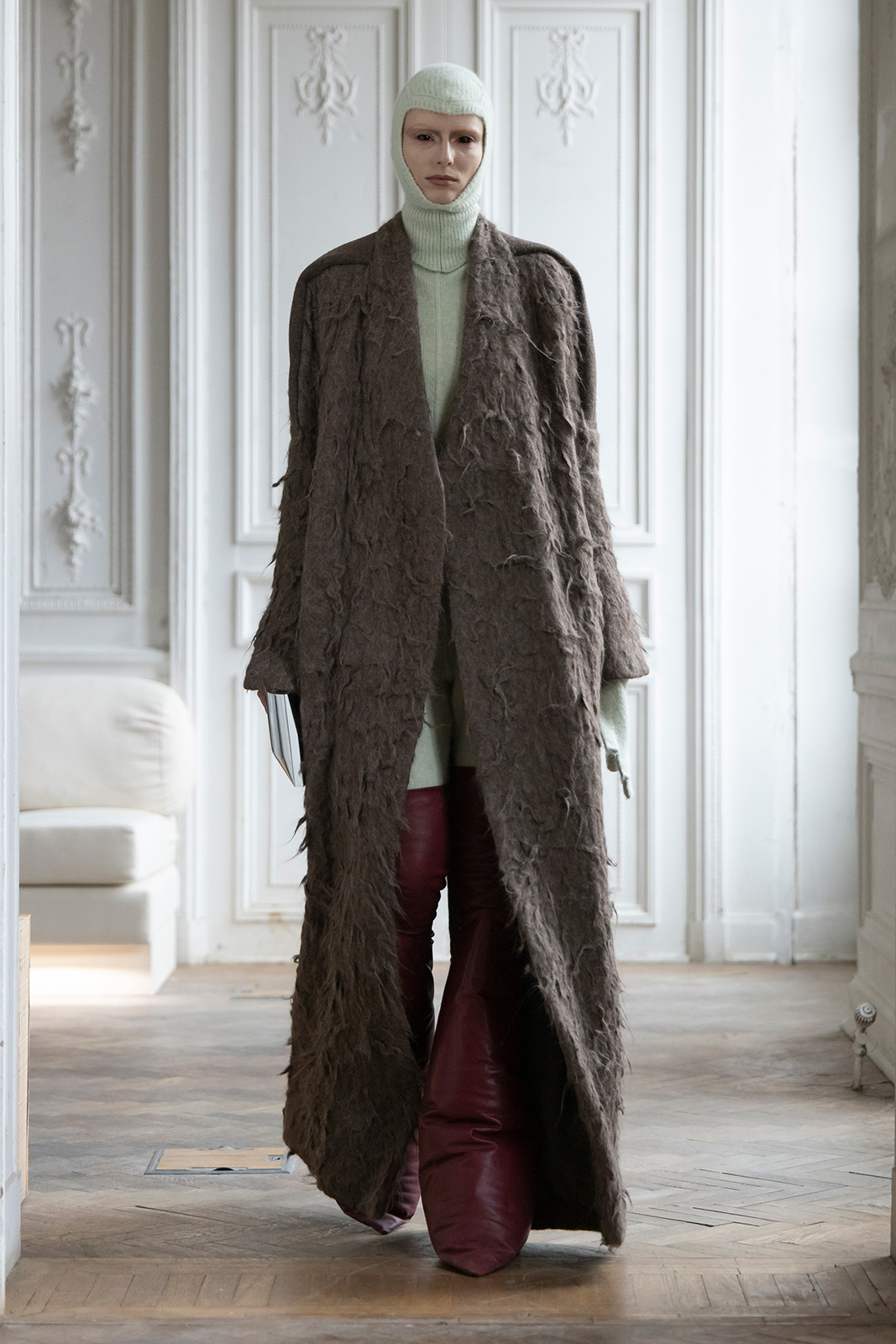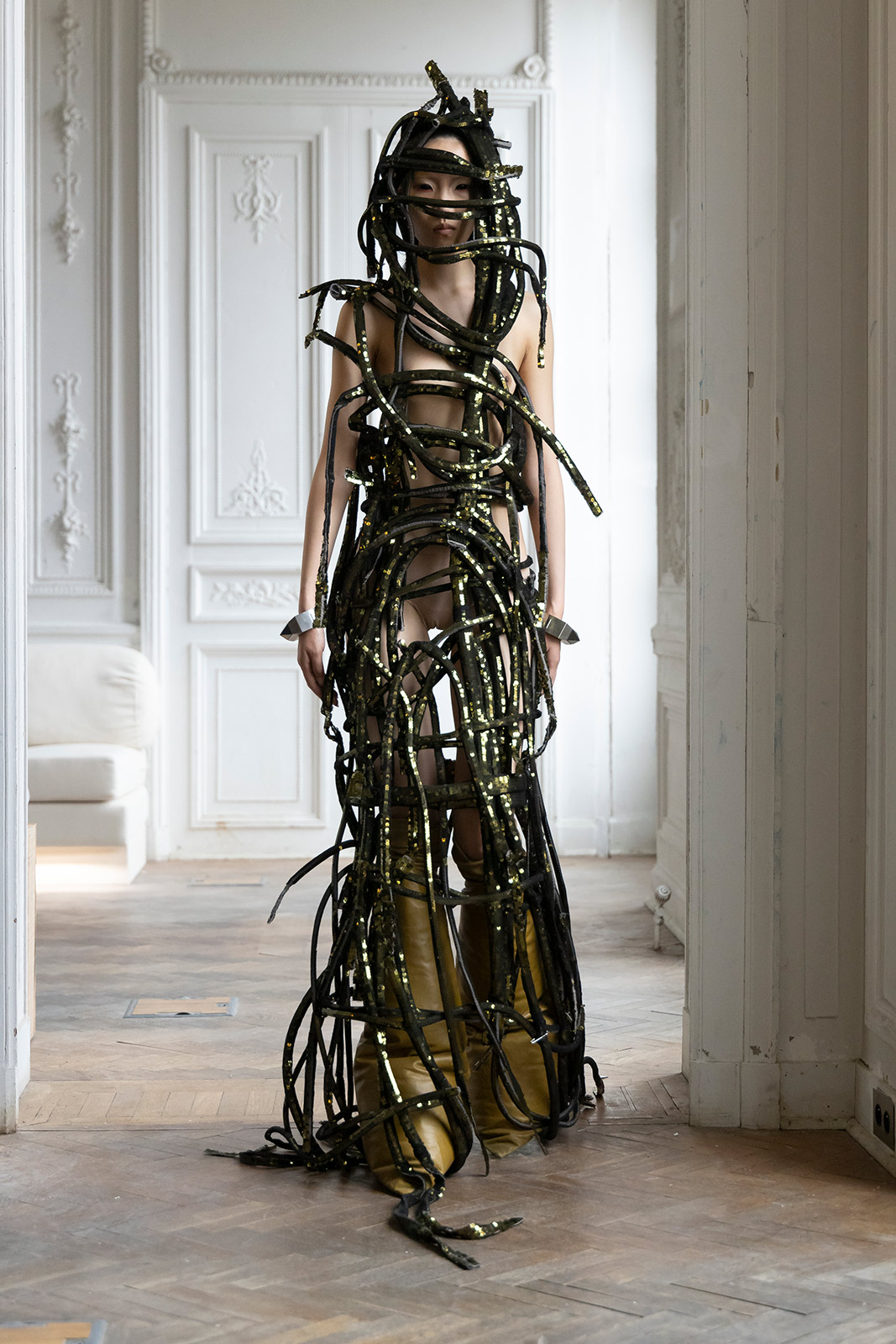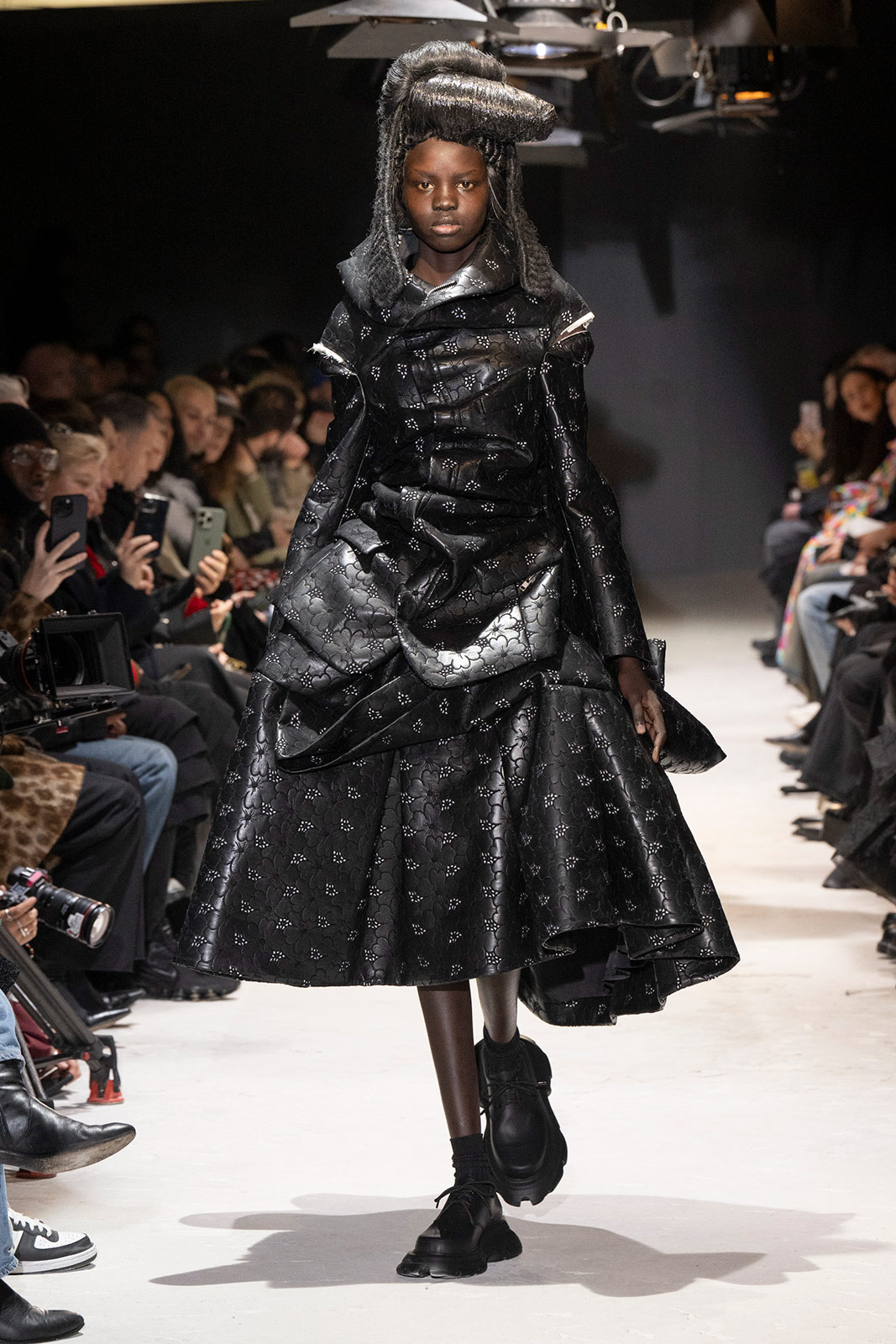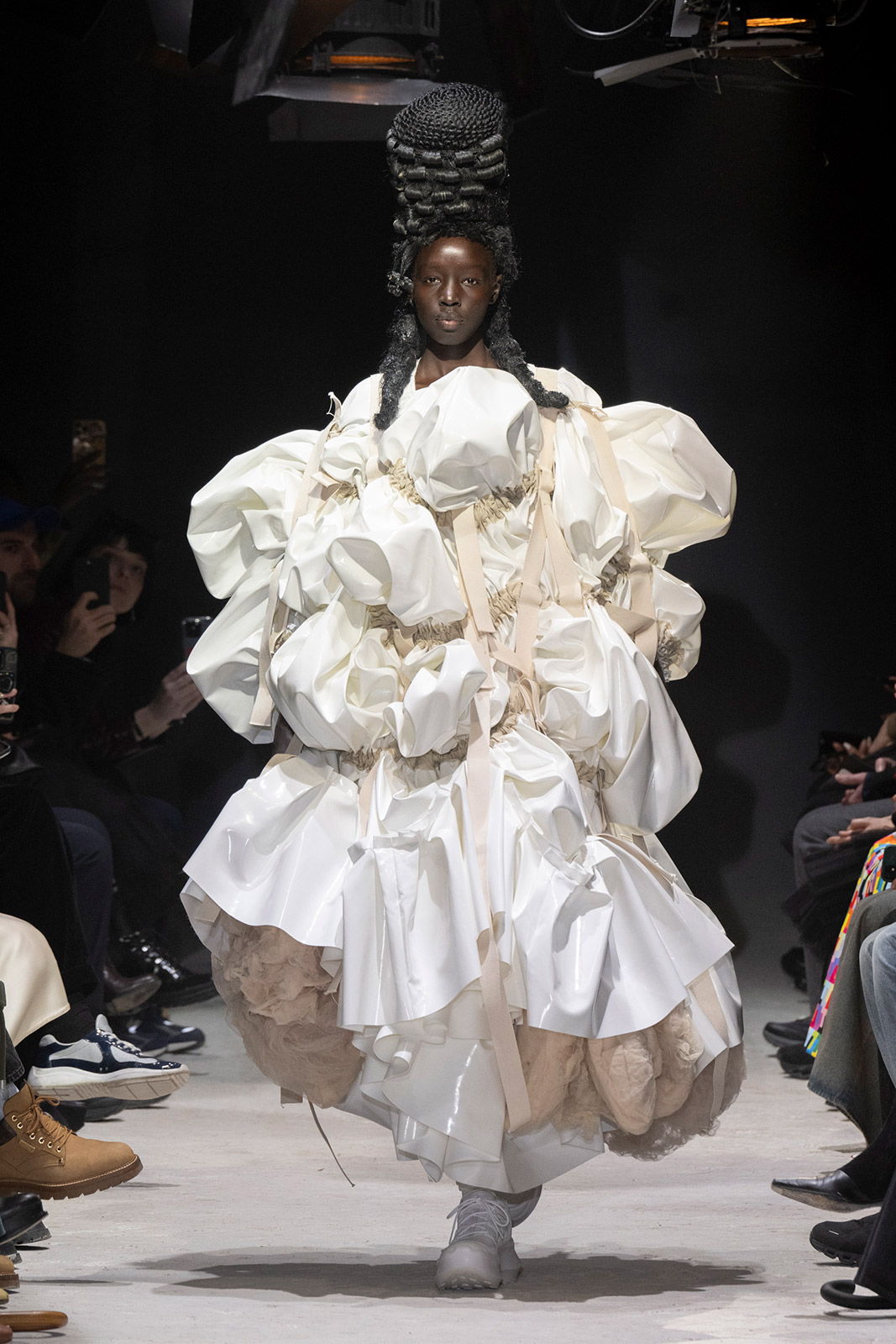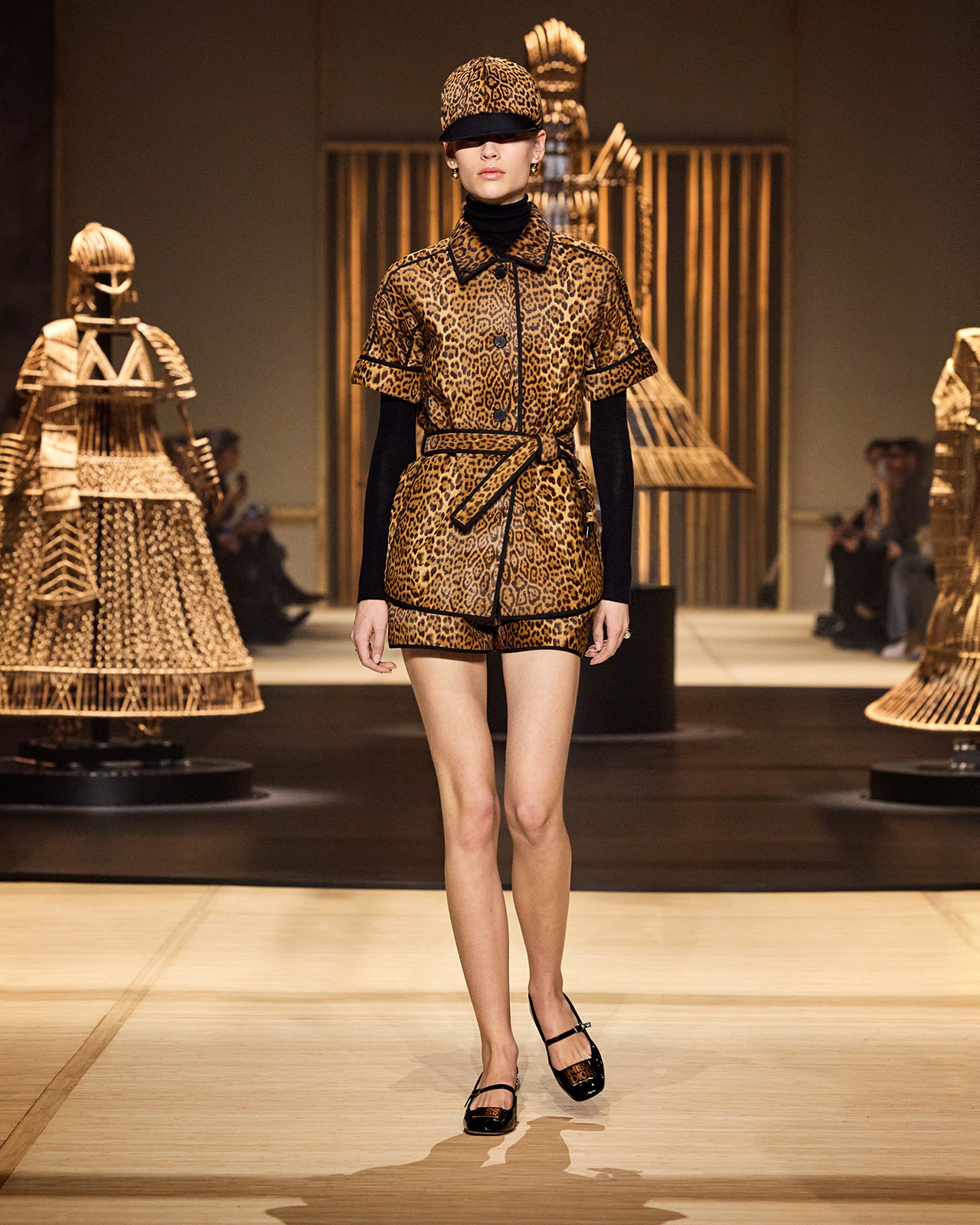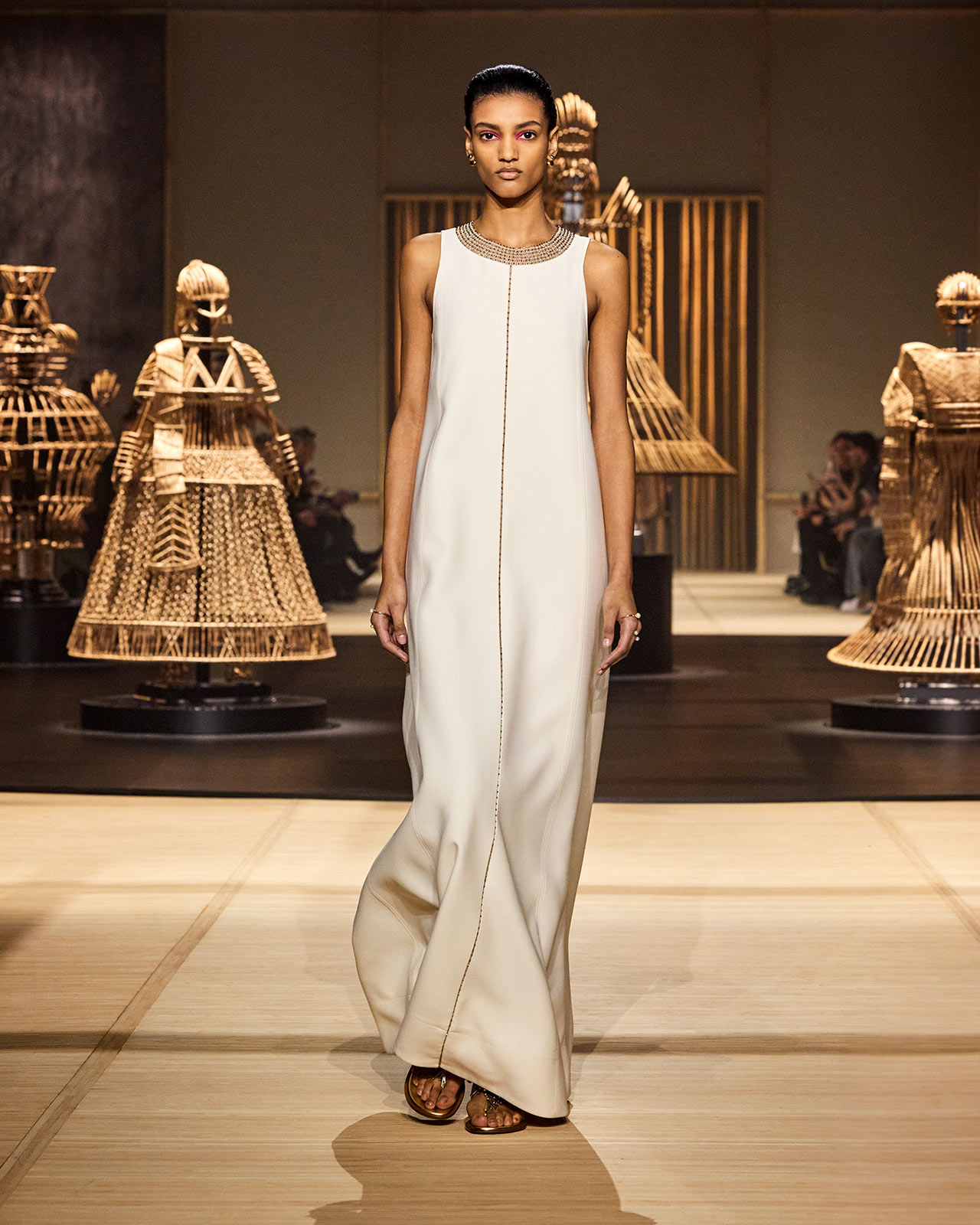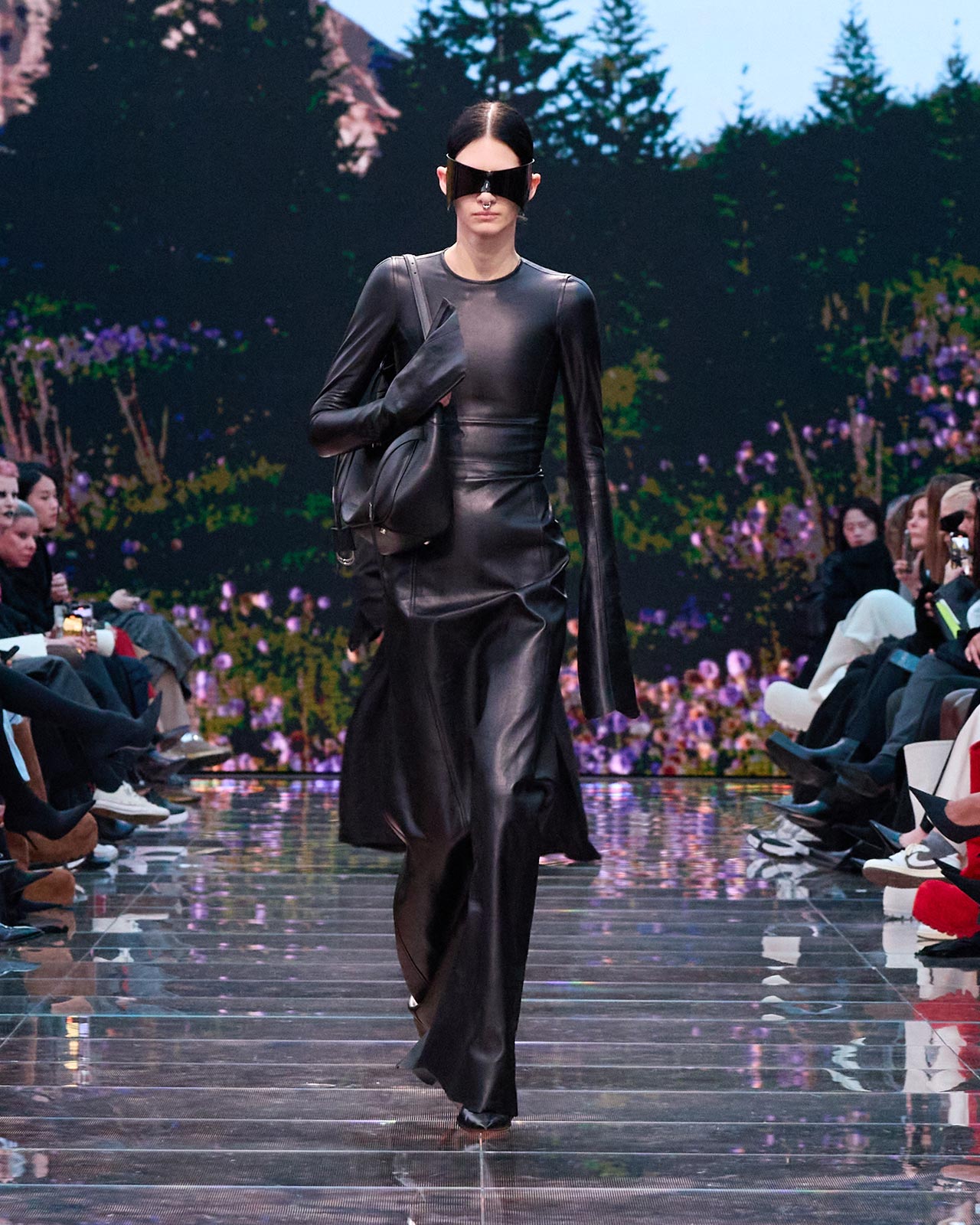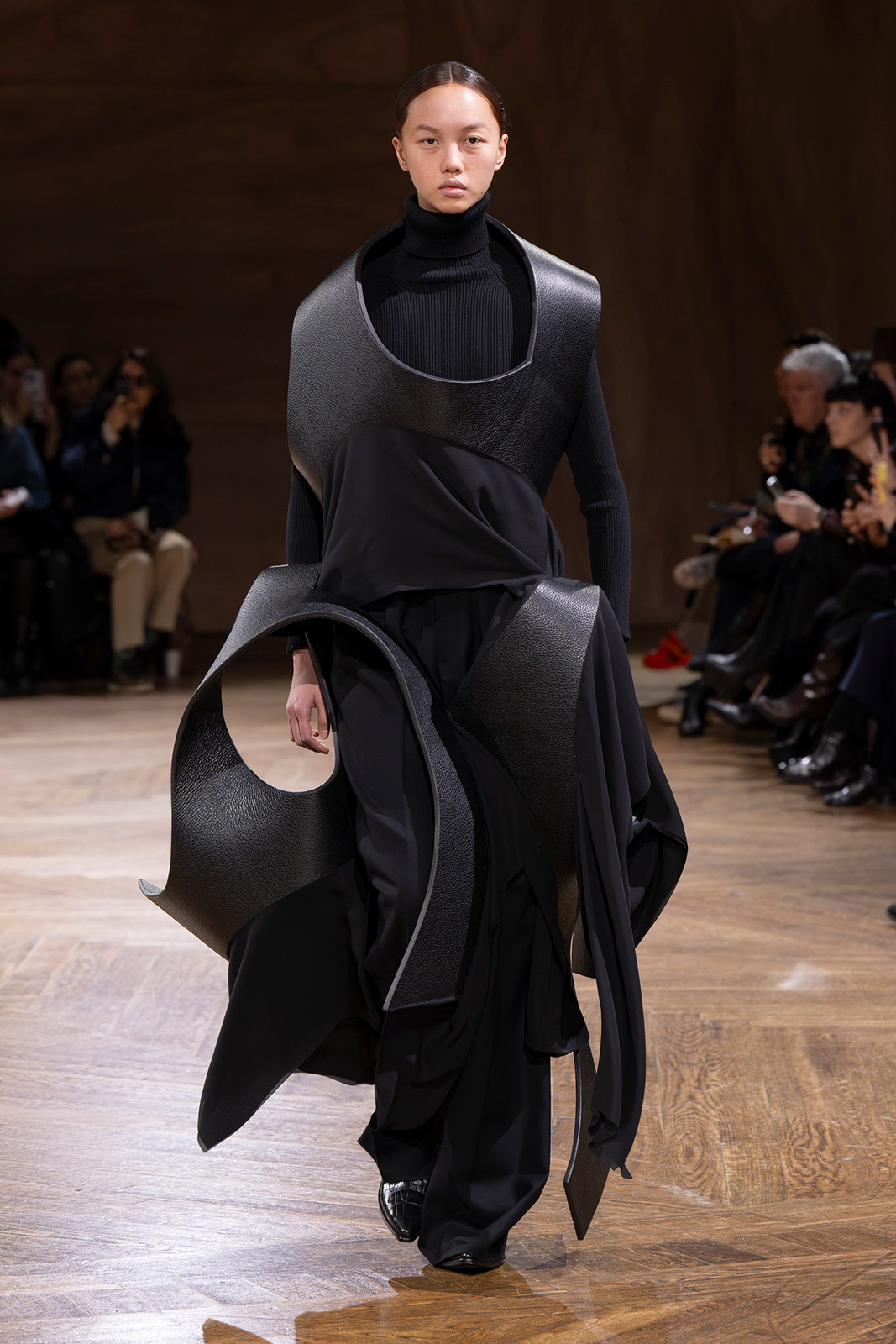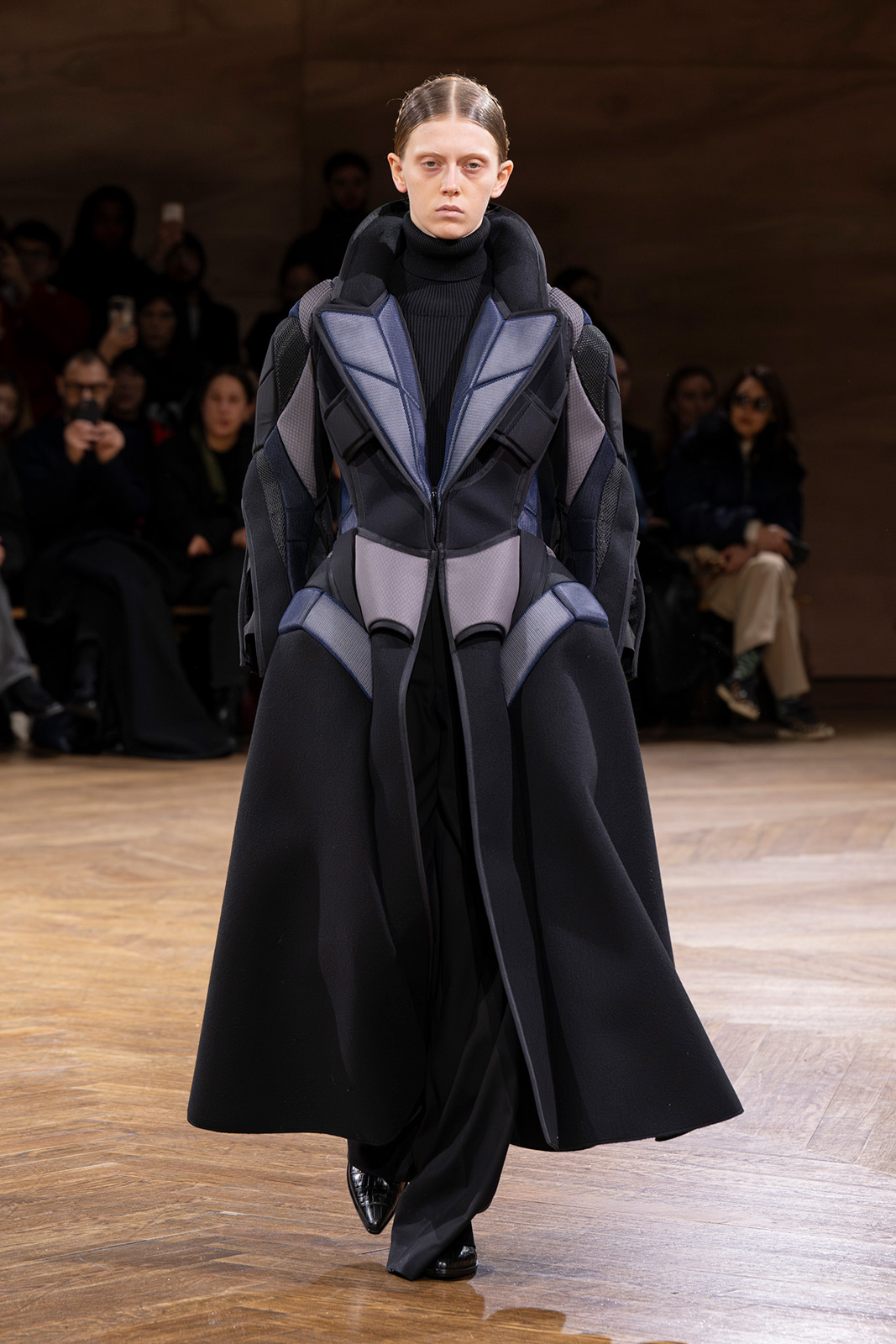The Document staff closes out fashion month with a roundup of Paris's most compelling shows
At the heart of every Francophile is two sentiments: vive la France and la mode. While the former is an expression chanted at the storming of the Bastille in the eighteenth century, the latter is a way of life. La mode—or fashion in English—is not only a historical practice in Paris, but a timeless culture tracing back to much before the French Republic. Once a tradition reserved for the elite, French fashion has adopted a more socially egalitarian ennui, at least aesthetically. Today, Paris’s most elite shows draw inspiration from the people, in the most luxury sense: vive la France exists as a major tenet of France’s national style identity as seen on the runway.
Houses like Saint Laurent and Dior stand on a legacy of glamor with an interpretation of street archetypes: slinky partygoers at smoky ’80s clubs; elegant ladies cloaked in bell-shaped beige trench coats. Paris Fashion Week is also the home to Japanese labels like Junya Watanabe, Comme des Garçons, and Issey Miyake whose dedication to impeccable craftsmanship and creativity represents perhaps the most important calling card of French fashion: elite construction.
It only makes sense that fashion week concludes here in Paris, at the apex of fashion history and contemporary luxury. Document rounds up the most eclectic runway shows from Paris’s Fall/Winter 2024 ready-to-wear season.
Hermès
Hermès was founded well over a century ago as a supplier of leather horse-drawn carriage accessories. Now, after a detour into Birkin bags and silk scarves, they’re once again calling on their equine roots. Instead of lounging in the back of a buggy, however, this year’s Hermès girl took the reins herself.
This Fall 2024 ready-to-wear collection drew on the quintessential equestrian uniform with riding boots, belted two-piece sets, and turtlenecks. Not limiting their riding purview to horses, Hermès considered the motorbike as well. Studded leather moto jackets and skirts added a metropolitan aspect that perfectly contrasted the more ranch-chic stablewear.
The final product had a sense of svelte utility. Forgoing loud patterns or distracting embellishments, attention was clearly focused on craftsmanship. The cool, understated, and clean lines could—if needed—be drawn into action. Practical on-the-go bags were clipped to belts as a romantic gesture toward hands-free fashion. In the same way that day-to-night wear was designed for the office and the club, this collection was designed for both the dimly lit cocktail bar and the car chase afterward.
Louis Vuitton
Ten years to the day after presenting his first Louis Vuitton collection, Nicolas Ghesquière returned to the Louvre’s iconic Cour Carrée with a runway so monumental it seemed to almost shatter the glass pyramid encasing it. Spectators took one look at the great orb suspended from the ceiling and knew they weren’t here for cutesy little pleasantries. Ghesquière put together a collection of colors, silhouettes, materials and cuts so varied it seemed to essentialize not only his decade at the house but the entire array of Louis Vuitton house codes. One look contrasted an oversized white tee and sleeveless black cardigan with a dramatic skirt flaring out in enormous quicksilver ruffles. Elsewhere, a jacket bisected by a horizontal front zip, generous rounded shoulders and arrow-straight sleeves encapsulated the multidirectional, highly structured style of the collection’s garments. A diverse range of handbags and clutches, some octagonal and boxy, others of a more traditional shape accented with fur detailing, were particularly beguiling. If the press release highlighted the image of “a stylistic North Star that indicates the right direction and lights the way,” Ghesquière’s eclectic collection proved there is no one way to find beauty.
Saint Laurent
Attendees of Saint Laurent’s winter 2024 womenswear show witnessed something between a conventional runway and opulent cinema. Models marched in all directions around two circular rooms walled in emerald damask, set to an eclectic soundtrack spanning house and orchestral music. It was a setting appropriately baroque for a collection of clothes itself preoccupied with notions of layering, transparency, and fantasy. Anthony Vaccarello’s line of razor-thin garments heralded a new turn in the house’s tradition of nus-habillés, and it’s fitting that we should get such a collection mere weeks after the opening of Sheer, a retrospective exhibition at the Museé Yves Saint Laurent on Paris’s Avenue Marceau. The show aimed to deliver, as stated in the press release, “a memory of fashion as we once knew it.” And seeing models in knee-length transparent dresses wound tight like a pantyhose, the boxy masculine blazers, and the bulbous glass bangles, who could argue otherwise? The collection at times feels designed for a fantasy winter, or a Hollywood one, where sheer pussy bow blouses are just as weather-appropriate as a ballooning coat made of marabou feathers. Vaccarello, with his filmmaker’s eye, is more interested in voyeurism than in realism. Temperature be damned—this latest collection implored us to lean forward and look.
Loewe
At the Château de Vincennes, a former fortress and royal residence of French Kings from the 14th to the 16th century, Loewe painted the walls green and decked them with 18 of American painter Albert York’s small oil canvases, created between 1963 and 1990. York’s familiar subjects—still lifes, idyllic landscapes, animals—exuded a quiet beauty, something of a dark secret, of whispers behind closed doors, intimate and inherent to the private affairs of monarchs and now, Jonathan Anderson’s exceptional collection. His Loewe has set the expectation of a certain obfuscated luxury, and this season, the creative director turned the value of provenance on its head.
One cashmere overcoat featured a silver collar that mimicked fur but was actually made of wood, carved like the legs of a Chippendale chair. A drop-crotch jumpsuit had a long panel that ran up one leg and, like a scarf, wrapped around the neck. From afar, caviar-looking beads resembled bouclé on a black tailcoat, whereas prints of floral chintz and antique Chelsea porcelain were, from up close, actually embroideries with countless tiny colorful beads. The fabric of reality puckered when you turned from the canvases to the clothes and realized nothing was as it seemed.
Issey Miyake
Satoshi Kondo titled his Fall 2024 ready-to-wear collection for Issey Miyake What Has Always Been. Fittingly, this season’s offerings felt primordial—but not in the bubbling-pit-of-tar way. The runway was an organic, Phanerozoic explosion of life.
The tassels on droopy wide-brimmed hats sported dangled like bellflowers hanging off of stems. The colors were bold and solidly blocked, like a field of bacterial or fungal growth. Slouchy unstructured overcoats looked alive in their movement.
Kondo’s show ventured outside fashion’s insular and self-referential scene. For him, a return to basics doesn’t mean clean hemlines or “classic” design, but rather the fundamental, cellular building blocks of life.
That’s not to say his clothes ignore the fashion lineage from which they come. True to the brand’s DNA, pleats, of course, were present. Mirroring unmitigated growth, peated, and translucent fabric overwhelmed some models in perfectly oversized silhouettes. More generally, Kondo played with traditional Miyake house codes of fit, creating pieces so layered and raucous that they bucked any classification. Although it was a novel approach to clothing, this season’s collection drew on concepts that existed long before and will exist long after all humanity, until life crawls out of the muck again.
Rick Owens
Giant sequoias and endless trails; green lawns and mansard roofs the color of cinnamon; dry heat and dried-up wells. That’s suburban Porterville, California, where a young Richard Saturnino Owens grew up. He’d make his way to Los Angeles—then Paris, of all places—and go on to become one of fashion’s most successful independent designers. Ol’ Porterville, though, had been on his mind. It’s one of those West Coast cities whose impossibly vast natural beauty and small-town mystery provide a vivid sight for sci-fi exploration and the ideal high-fashion inspiration.
Owens is no stranger to the extraterrestrial. This season, he brought if not Porterville, then its ghost, to his house on Place du Palais-Bourbon, where his model-aliens searched for their version of home on Earth. The show began with spacesuits, or bodystockings in recycled cashmere or felted alpaca, and climaxed with sequined webs of rubber hosing, which twinkled like headlights on Californian highways. In between were dramatic capes and ponchos in earth tones, heightened by a leather version of the inflatable rubber boots from his men’s runway in January. Then, a fishtail dress added a fuzzy glamor that harkened back to Golden-Age Hollywood by way of cable television. But a long way from home, this was.
Comme des Garçons
“This is about my present state of mind,” wrote Rei Kawakubo in a press release for Rei Kawakubo’s latest collection for Comme des Garçons. “I have anger against everything in the world, especially against myself.” Anger was a just and timely response to this moment, when so much is wrong, yet so little power is afforded to change. Maybe Kawakubo’s frustration with herself stemmed from the same helplessness, though more specifically at the rubric of a fashion show, with its politics, which can’t enact the kind of real-world resolution so urgently needed. But wanting a change, and fighting for it, has to count for something.
The clothes were further explorations of Kawakubo’s usual wearable sculptures, multidimensional and tremendous, complex but never overwrought, at once steeped in history and removed from reality. There were plays on feminine tropes, namely panniers, bows and rosettes, their plain prettiness offset by angular lines on biker-style jackets and, more poignantly, by how the models marched down the runway. Some stamped their feet, others scrunched their faces and clenched their fists in anger. They were all dressed in black, save for the last warrior in white, perhaps a light at the end of the tunnel. Kawakubo is never that literal, or excessively sentimental, but one’s allowed the occasional wishful thinking.
Dior
For last fall’s Dior ready-to-wear, Maria Grazia Chiuri tipped a beret to the haughty Parisian glamor of the ’50s. This year, she launched us forward a decade, referencing Marc Bohan and Philippe Guiborgé’s influential ‘Miss Dior’ collection from 1967. ‘Miss Dior,’ a pioneering timestamp in the invention of ready-to-wear, made a perfect fulcrum for Chiuri’s latest runway. In a vein adjacent to her spring couture collection from January, the designer worked from a restricted palette of beige, black, and porcelain white. Wearability has become Chiuri’s calling card, as seen in the trims, hemlines, and styling of this runway’s neutral color variations. Even the runway’s décor—warrior-like figures made of cane and bamboo latticework executed by Indian artist Shakuntala Kulkarni—served to emphasize the pliability of the clothes. A button-up wool cape and matching thigh-skimming A-Line skirt melded comfort with a touch of old-fashioned chic. Leopard prints and one pleated denim skirt kept the runway lively. The collection’s dresses, folding softly to the floor with beaded embroidery around the neck, took a modern perspective on the traditional tunic. By now, it’s clear that Chiuri considers herself a fashion historian as much as a designer. When the words ‘Miss Dior’ appear on her garments—as they do, in large painted text, throughout this collection—it is not a mere reference to Bohan and Guiborgé’s work, but an assertive symbol of the freedom Chiuri’s clothes instill in the modern Dior woman.
Balenciaga
If there’s ever anything to expect from Demna, it’s that his definition of luxury will always oppose its dominant conception. If old Hollywood glamor is back, his version is crust punk. If maximalism is in, he’s presenting a dress made of one oddball swathe of fabric draped to look like a monolith. For this season’s Balenciaga, Demna applied this contrarian-chic approach to the very materials themselves rather than the collection’s larger design concept. Models stomped the runway in drapes reminiscent of Cristóbal Balenciaga’s signature drape styles, yet where the fabric was expected to flow, it swayed stiffly due to a special crystal treatment Demna and his team innovated specifically for the runway. Giant faux fur coats looked like dingy bathrobes in the best pre-loved way, and giant denim pieces looked grease-paint stained as if to say “you want technique? What if the garment were technically processed to look dirty?” Backpacks are not just bags but mini dresses; bras not just support garments but gowns; luxury dust bags, purses in their own right. Balenciaga leathers may have sported tags like they’d been freshly burgled from the store, yet the only thing Demna stole was the show.
Junya Watanabe
Junya Watanabe’s Fall 2024 ready-to-wear collection was praised by many as sculptural. While, yes, there were exaggerated, geometric, and rigid formal elements, simply their presence did not make the collection interesting. Rather, Watanabe’s thoughtful use of abstract shapes allowed him to both deconstruct and update the artistic medium.
The first few looks featured three-dimensional leather pyramids intersecting simple, muted designs very literally, designed around the moving body in a larger-than-life way. From these original disruptions, as models made their way down the runway, more mutations occurred. Belts were stacked. The sculptural details took on organic shapes. Huge leather spikes exploded from the waistline of one conservative black dress. Blouses were separated into ribbons. Leather jackets were subdivided and inflated away from elegant floral dresses underneath.
A little over halfway through the show, the ornamentation seemed to synthesize with the clothing underneath. Geometric shapes were woven into the designs of the fabric, adding structure rather than interrupting it. Previously discordant elements—for example, impractical leather harnesses-like shapes—were decorated and incorporated into the design. In their synthesis with more classic silhouettes, Wantanbe advanced an updated view of fashion’s future. Instead of resting on his sculptural laurels, he used his designs to challenge normative forms.



